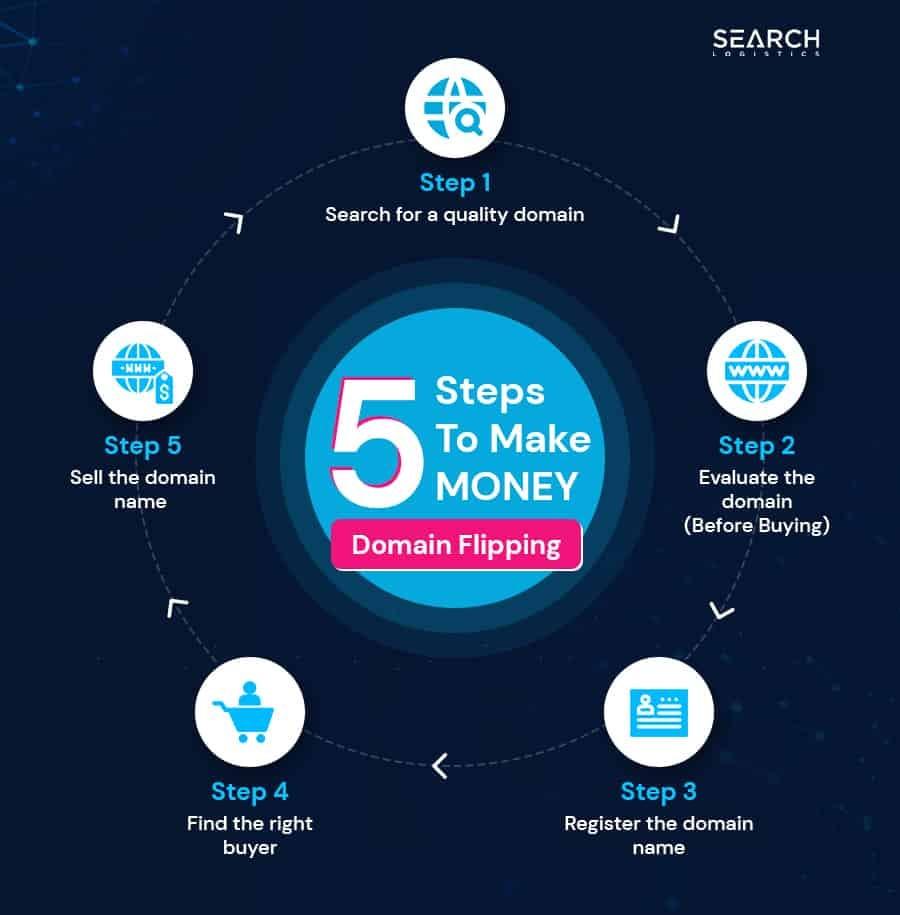Table of Contents
- Understanding the Basics of Website Flipping for Beginners
- Key Strategies for Evaluating Profitable Websites
- Essential Tools and Resources for Successful Flipping
- Marketing Techniques to Boost Website Value
- Secrets to Managing and Growing Your Flipped Websites
- Q&A
- Wrapping Up


Understanding the Basics of Website Flipping for Beginners
Website flipping is a lucrative venture that involves buying, improving, and selling websites for profit. For beginners, the process can seem daunting, but understanding the fundamental components can pave the way for a successful flipping experience. First, it’s critical to identify valuable websites that have potential. Look for sites with solid traffic, existing revenue streams, or untapped niches that can increase their profitability. Tools like Google Analytics and SEO platforms can help gauge a site’s performance.
Once you’ve acquired a website, the next step is optimization. This stage typically involves making enhancements to improve user experience and SEO, such as:
- Revamping Content: Updating outdated articles, adding new posts, and ensuring all information is relevant.
- Improving Design: Implementing a clean, responsive design that works seamlessly across devices.
- Boosting SEO: Conducting keyword research, optimizing meta tags, and building backlinks.
After optimizing, it’s essential to monitor the website’s performance closely. Understanding your audience’s behavior and the effectiveness of your improvements can guide any further adjustments. Establish metrics to measure success, such as increased traffic and revenue growth. You can present this data in a simple table to visualize performance over time:
| Month | Traffic (Visitors) | Revenue ($) |
|---|---|---|
| January | 500 | 100 |
| February | 800 | 150 |
| March | 1200 | 250 |


Key Strategies for Evaluating Profitable Websites
When embarking on the journey of evaluating profitable websites, there are several key strategies that can significantly enhance your chances of success. First, perform a thorough analysis of the website’s traffic trends. Use tools like Google Analytics to gain insights into the number of visitors, geographical distribution, and user behavior. Understanding these metrics will help you determine the website’s market relevance and potential for growth. Additionally, consider evaluating the traffic sources—organic, direct, paid, or referral—and focus on websites with robust organic traffic, as they often present better long-term value.
Next, delving into the website’s monetization methods is crucial. Identify how the site generates income—be it through advertising, affiliate marketing, or product sales—and assess the effectiveness of these channels. Websites employing multiple revenue streams tend to be more resilient. Moreover, closely examine the current profit margins and expenses associated with running the site to ensure that the potential return on investment (ROI) aligns with your goals. Keep in mind that not every site with high traffic will translate into high profits if the monetization strategies are lacking.
Lastly, analyzing the website’s niche and audience engagement can provide valuable insights. A website that serves a well-defined niche typically sees greater loyalty and repeat visitation, making it more attractive to buyers. Look for indicators of active engagement such as comments, shares, and a newsletter subscription base. You might also want to conduct a quick comparison with competing sites or use tools to gauge social media activity. Here’s a simple table to summarize key aspects to consider:
| Evaluation Criteria | Details |
|---|---|
| Traffic Trends | Analyze visitor stats and trends. |
| Monetization Methods | Identify income sources and effectiveness. |
| Niche Engagement | Evaluate audience loyalty and interaction. |


Essential Tools and Resources for Successful Flipping
To embark on a successful website flipping journey, equipping yourself with the right tools and resources is crucial. One of the most vital platforms is a reliable domain registrar. Here, you can purchase and manage your domain names efficiently. Consider options like Namecheap or GoDaddy, which provide user-friendly interfaces and useful management features. Additionally, integrating a robust website hosting service such as Bluehost or SiteGround will ensure your sites are fast, secure, and able to handle traffic smoothly.
Another important aspect of flipping websites is optimizing them for search engines. Tools like SEMrush and Ahrefs are excellent for conducting keyword research and competitive analysis. They offer insights that help you understand what keywords are driving traffic in your niche and provide the metrics necessary for improving your site’s SEO. Combining these insights will help you generate content that resonates with both users and search engine algorithms.
A comprehensive analytics tool is also fundamental for tracking your performance over time. Google Analytics and Google Search Console are indispensable resources that provide valuable data on user behavior, site performance, and traffic sources. With this information, you can tweak your strategies to enhance site profitability. For ease of understanding, consider using WordPress plugins such as Yoast SEO or MonsterInsights, which integrate seamlessly and offer insights right within your WordPress dashboard.
Marketing Techniques to Boost Website Value
To elevate the value of a website, implementing diverse marketing techniques is essential. Start by enhancing your content quality. Regularly updating to provide fresh, informative, and engaging content not only caters to users’ interests but also appeals to search engines, improving your site’s SEO. Consider the following tactics:
- Content Marketing: Create blogs, videos, and infographics that educate and engage your audience.
- Social Media Strategies: Leverage platforms like Instagram, Twitter, and Facebook to reach broader audiences and drive traffic to your site.
- Email Marketing: Develop personalized email campaigns to nurture leads and encourage repeat visits.
User experience is another critical aspect that can significantly increase a site’s value. A clean, intuitive design helps retain visitors and improves conversion rates. Focus on optimizing site speed and mobile responsiveness, ensuring accessibility for all users. Utilize tools such as:
| Tool | Purpose |
|---|---|
| Google PageSpeed Insights | Analyze and optimize site speed |
| Mobile-Friendly Test | Check mobile responsiveness |
| Hotjar | Understand user behavior |
building a strong online presence through SEO and backlinks can enhance your website’s credibility and visibility. Focus on acquiring high-quality backlinks from reputable sites, and use local SEO strategies to attract targeted traffic. Implementing these approaches ensures not only increased traffic but also a more valuable website that stands out in a crowded marketplace.


Secrets to Managing and Growing Your Flipped Websites
Successfully managing and growing your flipped websites requires a strategic approach that balances both the short-term and long-term vision of your investment. To start, ensure that you have a solid understanding of the website’s niche and audience. Conduct in-depth research to identify what content resonates best with visitors, and leverage this knowledge to create high-quality and engaging content. Consider the following key strategies:
- Content Quality: Regularly update your site with fresh, value-driven content that addresses your audience’s pain points and interests.
- SEO Optimization: Implement on-page SEO tactics, such as optimizing meta tags, headers, and images while ensuring your website’s structure makes it easy for search engines to crawl and index.
- User Experience (UX): Focus on enhancing UX by improving site speed, optimizing mobile responsiveness, and simplifying navigation.
Another essential aspect of managing your flipped websites is monitoring performance metrics. Utilize analytics tools to track key performance indicators (KPIs), which are vital for understanding user behavior and making informed decisions. Pay attention to:
| Metric | Importance |
|---|---|
| Traffic Sources | Identifies where your visitors come from, helping tailor marketing efforts. |
| Bounce Rate | Indicates how well users engage with your content, informing you on areas for improvement. |
| Conversion Rate | Measures the effectiveness of your call-to-action strategies and monetization efforts. |
Lastly, don’t underestimate the power of building a community around your websites. Engage with your audience through social media, newsletters, and interactive content. Fostering a loyal user base not only encourages repeat visits but can also lead to organic growth through word-of-mouth referrals. Techniques to enhance community engagement include:
- Social Proof: Showcase testimonials and user reviews to build trust and credibility.
- User-Generated Content: Encourage your users to share their experiences or contribute content, thereby enriching your site’s value and community feel.
- Regular Interaction: Respond promptly to comments and messages, creating a dialogue that can fortify relationships with your audience.
Q&A
Q&A: Website Flipping Course
Q1: What is website flipping? A1: Website flipping refers to the process of buying a website, improving its performance, and then selling it for a profit. This practice involves a range of activities, from enhancing design and content to optimizing SEO and increasing traffic, all aimed at boosting the website’s overall value.Q2: Who is a website flipping course for? A2: This course is ideal for entrepreneurs, digital marketers, and anyone interested in online business. Whether you’re a complete beginner or someone with a bit of experience in digital real estate, this course will equip you with the tools and strategies needed to successfully flip websites.
Q3: What skills will I learn in a website flipping course? A3: You’ll learn a variety of skills, including website valuation, content creation, SEO strategies, traffic generation, and digital marketing techniques. You’ll also gain insights on negotiation, analytics interpretation, and how to spot potential opportunities in the online marketplace.
Q4: Is website flipping a profitable venture? A4: Yes, many individuals and businesses have turned website flipping into a lucrative side hustle or full-time career. Profits can vary widely depending on the niche, the improvements made, and market demand. With the right skills and knowledge, it is certainly possible to create significant returns on your investment.
Q5: How much time do I need to invest in flipping a website? A5: The time investment can vary based on the complexity of the website and your experience level. Some projects may only require a few hours per week, while others may demand more intensive management. This course will help you develop a realistic timeline based on your goals and the specific website you choose to flip.
Q6: What types of websites are best for flipping? A6: Generally, websites with existing traffic and revenue potential are the most promising. Popular niches include e-commerce, blogs, affiliate sites, and local business directories. During the course, you’ll learn how to evaluate different types of websites and identify which ones offer the best flipping prospects.
Q7: Do I need technical skills to succeed in website flipping? A7: While having technical skills can be beneficial, they are not strictly necessary. The course will cover fundamental aspects of website building and management, allowing even those with minimal technical knowledge to understand the process. Additionally, resources and tools are available to help you navigate through the technical components.
Q8: What resources will I have access to after completing the course? A8: Upon completion, you will have access to a wealth of resources including templates for website valuation, checklists for site audits, recommended tools for SEO and analytics, and ongoing support within the course community to help you as you embark on your flipping journey.
Q9: Can I take this course at my own pace? A9: Absolutely! Most website flipping courses are designed to be self-paced, allowing you to progress through the material at a speed that resonates with your learning style and personal commitments.
Q10: How do I start making money from website flipping? A10: Start by actively participating in the course, implementing what you learn, and practicing on websites that fit your budget. Focus on building your skills and network, then gradually transition into buying underperforming websites for flipping. With dedication and strategy, you’ll set the foundation for potential financial success in the website flipping arena. — Feel free to dive right in and start your journey—it could lead to exciting business opportunities and passive income streams!

